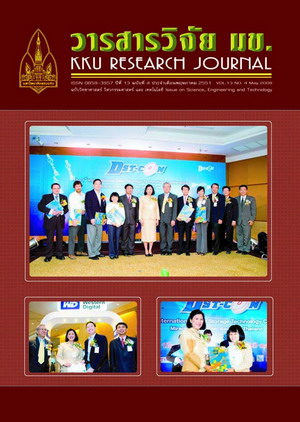Hit-or-miss transformation implementation on graphics processing unit
Main Article Content
Abstract
The hit-or-miss transformation (HMT), a binary matching between an image and a structuring
element, is a morphological operator. It has become a useful tool for shape detection. However, the HMT
processing time is too expensive in real applications. To use this technique for real-time processing requires
high computational processor. The graphics processing unit (GPU) is designed to draw images or graphics
scenes on the computer screens. GPUs have been rapidly developed to respond to the demand for rendering in
realistic game applications. However, modern GPUs are programmable in offering the capability to execute the
user's code. Due to their high performance and programmability, general purpose computation on GPUs has
become a new research field. In this paper, we present an efficient HMT implementation using a GPU. We
compare the execution time of this GPU implementation with that of CPU implementation. Our proposed
GPU-based HMT perform faster than the CPU-based HMT. This GPU-based HMT can help in speeding up
several real-time image processing applications including the defect detection in hard disk drive industrials.


